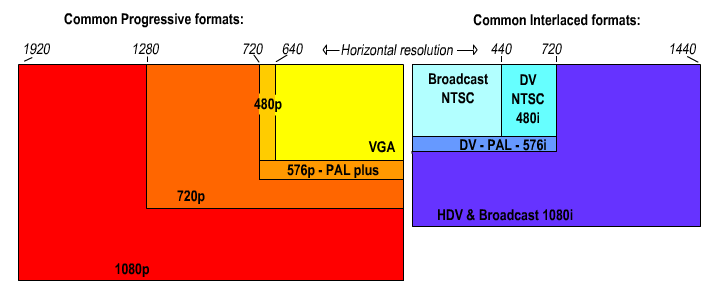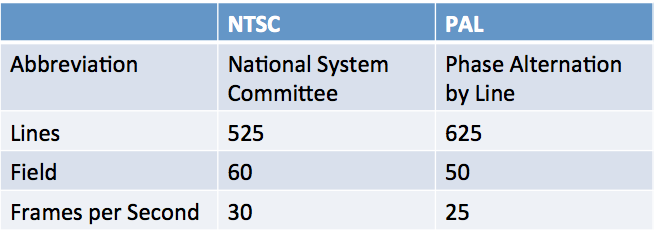What is NTSC and PAL ?
Most countries in North and South America, including the US and Canada, utilize the National Television Standards Committee (NTSC) format, while Europe, Australia and parts of Asia use a competing format called Phase Alternating Line (PAL). The major distinction between these two formats is the rate at which a broadcast is displayed on a TV screen: NTSC displays at 30 frames per second (fps), while PAL provides 25 fps. Each format also uses a different number of lines on an old analog TV display when showing the signal, creating two different resolutions. The widespread adoption of High-Definition Televisions (HDTVs) by many consumers has not eliminated this difference, however, since older broadcasting methods have influenced digital signal playback.
Primary Difference
The differences between these formats really start with the electrical power system behind the transmissions viewed on a TV. In the US and countries like Canada and Mexico, electrical power is generated at 60 hertz, so for technical reasons the NTSC signal is also sent out at 60 "fields" per second. The first field accounts for all of the odd-numbered lines on a screen, while the second one includes the even-numbered lines. Since most analog televisions use an interlaced system, this means that 30 fields of one type are sent out, along with 30 fields of the other type each second.
This line alternation happens so fast that it is
undetectable to the human eye, much like a film running through a
projector. The result for an NTSC television is 30 frames of a complete
image, made up of two fields for each frame, appearing every second.
Since countries in Europe and Asia often use a 50 hertz power supply,
the equivalent PAL lines go out at 50 fields per second. This means
that a PAL signal displays at 25 fps, consisting of two sets of 25
alternating lines.

If a PAL movie is converted to an NTSC tape, 5 extra frames must be added per second or the action seems "jerky." The opposite is true for an NTSC movie converted to PAL; five frames must be removed per second or movement can become unnaturally slow. Since audio and video data are often connected, the audio signal may also need to be sped up or slowed down to sound correct during playback.
Resolution Differences
Another difference between NTSC and PAL formats is resolution quality. While PAL may have fewer frames per second, it displays more lines than NTSC. PAL television broadcasts contain 625 lines of resolution, from top to bottom, compared to NTSC's 525. More lines usually means more visual information, which results in better picture quality and resolution. When an NTSC videotape is converted to PAL, black bars are often used to compensate for the smaller screen aspect, much like the bars at the top and bottom of a letterbox or "widescreen" movie.
Issues with Color Signals
When the NTSC format was first adopted in 1941, there was little discussion of color transmissions. As technology for color television developed, however, engineers had to create a broadcast method that would still allow owners of monochrome television sets to receive a picture. The PAL system, on the other hand, was created after the advent of color broadcasting, so color signals are much truer to the original image. This distinction often means that an unconverted signal being played on a TV of the other format might appear black and white, rather than in color.Conversion Options
A European television might not work properly in the United States and an NTSC-formatted video typically will not play on a PAL device. To address this issue, there are a number of companies that offer conversion kits from one format to the other. Some of these conversion methods can be time-consuming and vary in quality, though there are companies that provide conversion services for a fee.If a PAL movie is converted to an NTSC tape, 5 extra frames must be added per second or the action seems "jerky." The opposite is true for an NTSC movie converted to PAL; five frames must be removed per second or movement can become unnaturally slow. Since audio and video data are often connected, the audio signal may also need to be sped up or slowed down to sound correct during playback.




Comments
Post a Comment